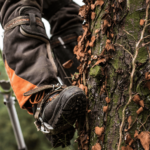Deciduous vs. Evergreen Trees Explained
Deciduous vs. Evergreen: Understanding Different Tree Types
In the world of trees, diversity reigns supreme. Among this diversity, two primary categories stand out: deciduous and evergreen trees. Each plays a unique role in their ecosystems and offers different characteristics. This article will delve into the distinctions between these two types of trees, helping you understand their roles in nature and their suitability for your landscape.
What are Deciduous Trees? Deciduous trees are known for their cycle of shedding leaves annually. They are characterized by their broad leaves, which often change color and drop in the autumn. This adaptation is a response to varying seasonal climates, particularly in regions with a distinct winter.
Examples include oak, maple, and birch trees. In the winter, these trees enter a state of dormancy, conserving water and energy by shedding leaves, which reduces the surface area through which water can be lost.
The Role of Deciduous Trees in Ecosystems:
- Provide seasonal habitat and food sources for wildlife.
- Contribute to soil fertility through leaf litter.
- Help in climate regulation through their seasonal cycles.
What are Evergreen Trees? Evergreen trees, on the other hand, retain their leaves throughout the year. They have leaves or needles that are often wax-coated, which reduces water loss and allows them to survive in various climates, including very cold environments.
Common evergreen trees include pine, spruce, and fir. These trees are particularly important in colder, snow-prone regions as they continue to photosynthesize throughout the year, albeit at a slower rate during winter.
The Role of Evergreen Trees in Ecosystems:
- Provide year-round shelter and food for wildlife.
- Crucial for carbon sequestration, especially in colder climates.
- Prevent soil erosion with their persistent foliage.
Choosing Between Deciduous and Evergreen Trees: When selecting trees for landscaping, consider the following:
- Climate: Deciduous trees are suitable for areas with distinct seasons, while evergreens thrive in a variety of climates.
- Purpose: If you need year-round foliage for privacy or windbreaking, evergreens are ideal. Deciduous trees are great for seasonal color and can provide summer shade while allowing winter sunlight.
- Wildlife support: Both tree types support diverse wildlife; your choice can depend on the type of habitat you wish to encourage.
Conclusion: Both deciduous and evergreen trees are vital to their respective ecosystems and offer unique benefits for landscaping. Understanding these differences can help in making informed choices for environmental conservation and gardening.
Call to Action: For professional advice on tree care or assistance in selecting the right trees for your property, contact Action Tree Care. Our team, including an ISA Board Certified Master Arborist, is ready to help you make the best decision for your landscape.
Reach out to us for expert tree services
Additional Resources:


